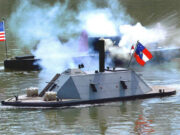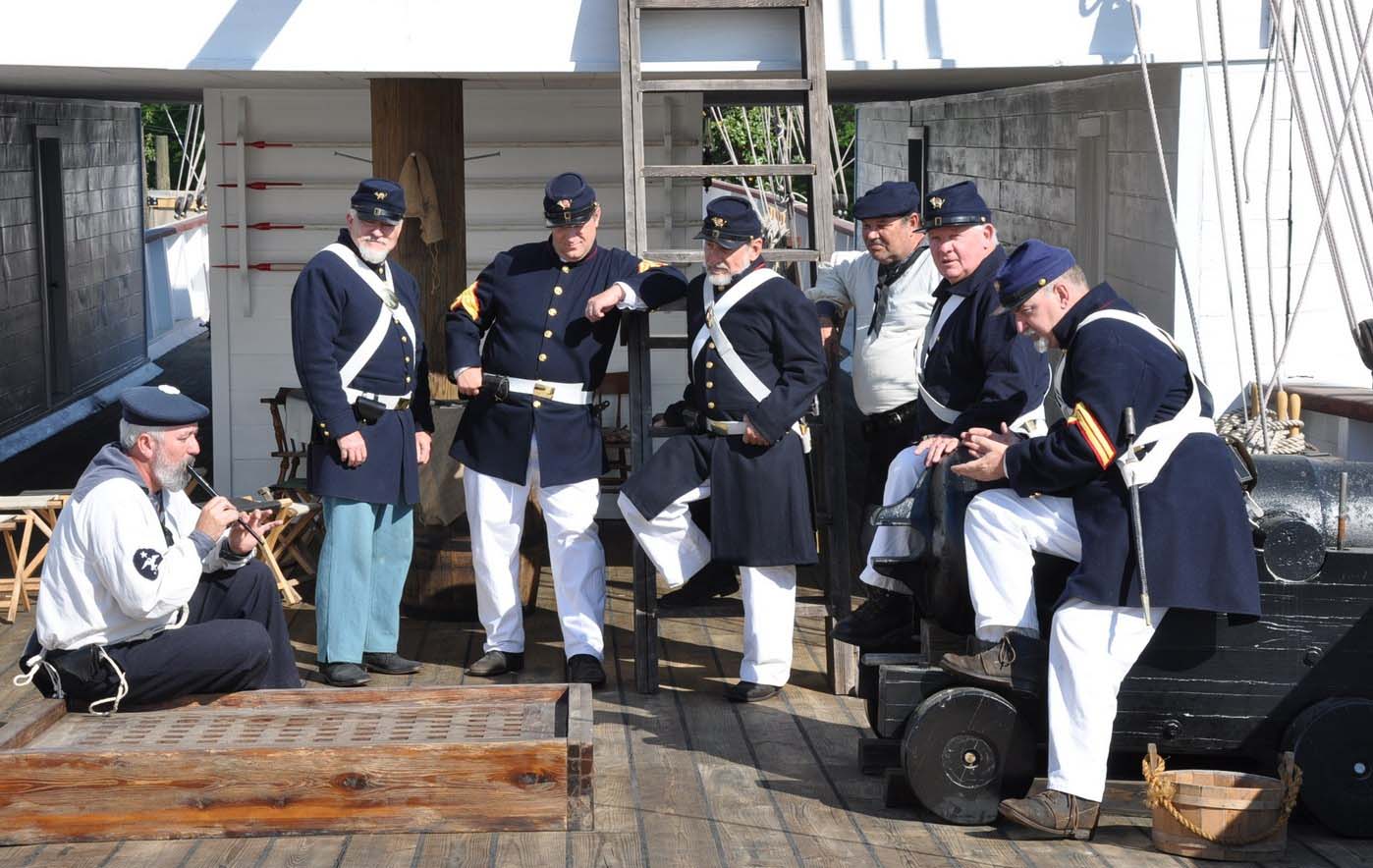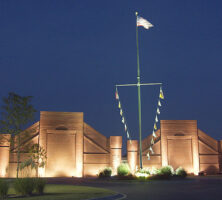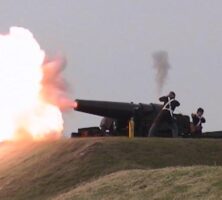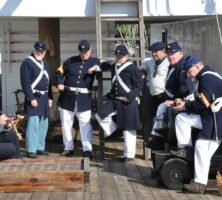The National Civil War Naval Museum at Port Columbus, formerly the Confederate Naval Museum, is the only institution in the nation dedicated to telling the little-known maritime story of the Civil War (1861-65). This 40,000-square-foot facility located on the Chattahoochee River in Columbus opened in 2001 and features the remains of two original Confederate navy ships, along with full-scale reproductions of parts of three other famous Civil War ships and numerous artifacts. Port Columbus is operated as a public-private partnership project between the City of Columbus and the Port Columbus Civil War Naval Center, Inc., a private nonprofit organization. The first phase of the project was funded by nearly $8 million in private local donations.

Courtesy of National Civil War Naval Museum at Port Columbus
A major feature of Port Columbus is the CSS Jackson, a 225-foot ironclad ship built in the Confederate Navy Shipyard, which is located less than a mile from the current museum. Though under construction for more than two years, the ship was not quite completed when a U.S. Cavalry column under General James Wilson captured Columbus in April 1865. All military and Confederate government property in Columbus was burned, including the shipyard and the CSS Jackson, which was set on fire and left adrift in the Chattahoochee River.
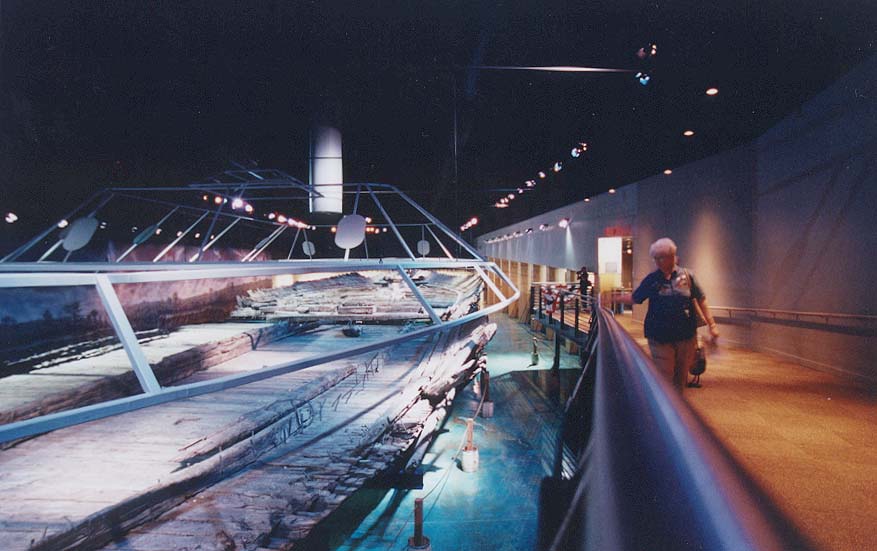
Courtesy of National Civil War Naval Museum at Port Columbus
The fire persisted for nearly two weeks, until the ship finally burned to the waterline and sank about thirty miles south of Columbus, where it remained for ninety-six years. The Jackson was raised in 1961 and brought back to Columbus, where today it forms the nucleus of the museum. The CSS Chattahoochee also burned at the war’s end; it too was recovered and returned in the early 1960s.
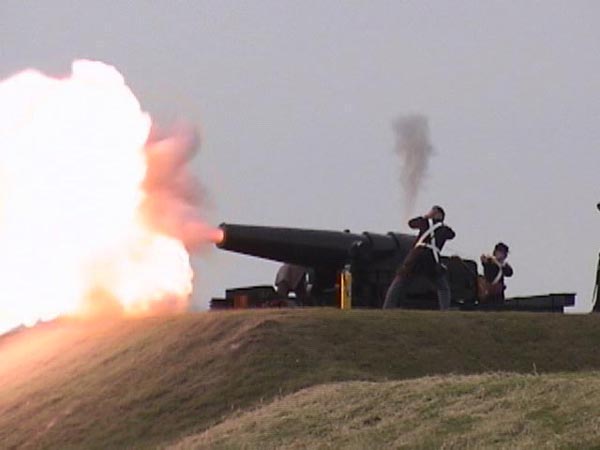
Courtesy of National Civil War Naval Museum at Port Columbus
In 2009 the museum completed and commissioned a replica of the wooden gunboat USS
Port Columbus is designed to place its visitors inside the stories it tells. Reproduced ships, including the USS Hartford, the USS Monitor, and the ironclad CSS Albemarle, are open so that Civil War naval life can be experienced from the inside. A visitor can hear the ships creaking and the water lapping at their sides; in the Albemarle, visitors enter the ironclad combat “simulator” and witness the U.S. Navy fleet sailing up and sending 455-pound cannonballs bouncing off the casemate in which they stand.
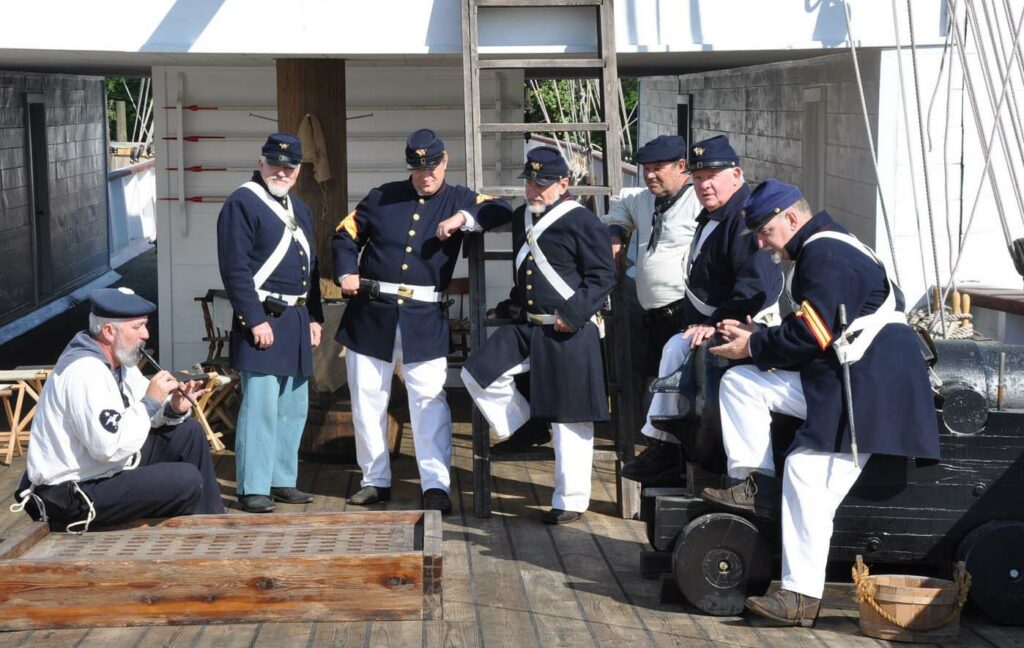
Courtesy of National Civil War Naval Museum at Port Columbus
Years of collecting have resulted in an extraordinary array of artifacts on display. The uniform coat worn by Catesby Jones, skipper of the CSS Virginia (popularly known as the “Merrimac”), on the day he fought the USS Monitor in one of naval history’s most famous battles is featured, along with weapons, equipment, documents, paintings, and a stunning flag collection.
Special events are held year-round at Port Columbus and range from academic symposia to living-history activities in which an original Confederate navy cannon is fired over the river. The museum’s largest annual event is “RiverBlast,” held in early March on the weekend nearest the anniversary of the facility’s opening. Port Columbus also features educational opportunities; a teacher’s guide is published, and special tours and programs are available to student groups visiting the museum.
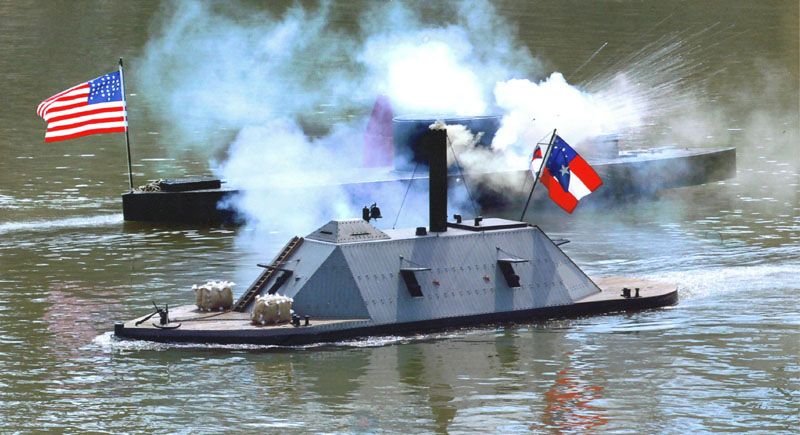
Courtesy of National Civil War Naval Museum at Port Columbus


